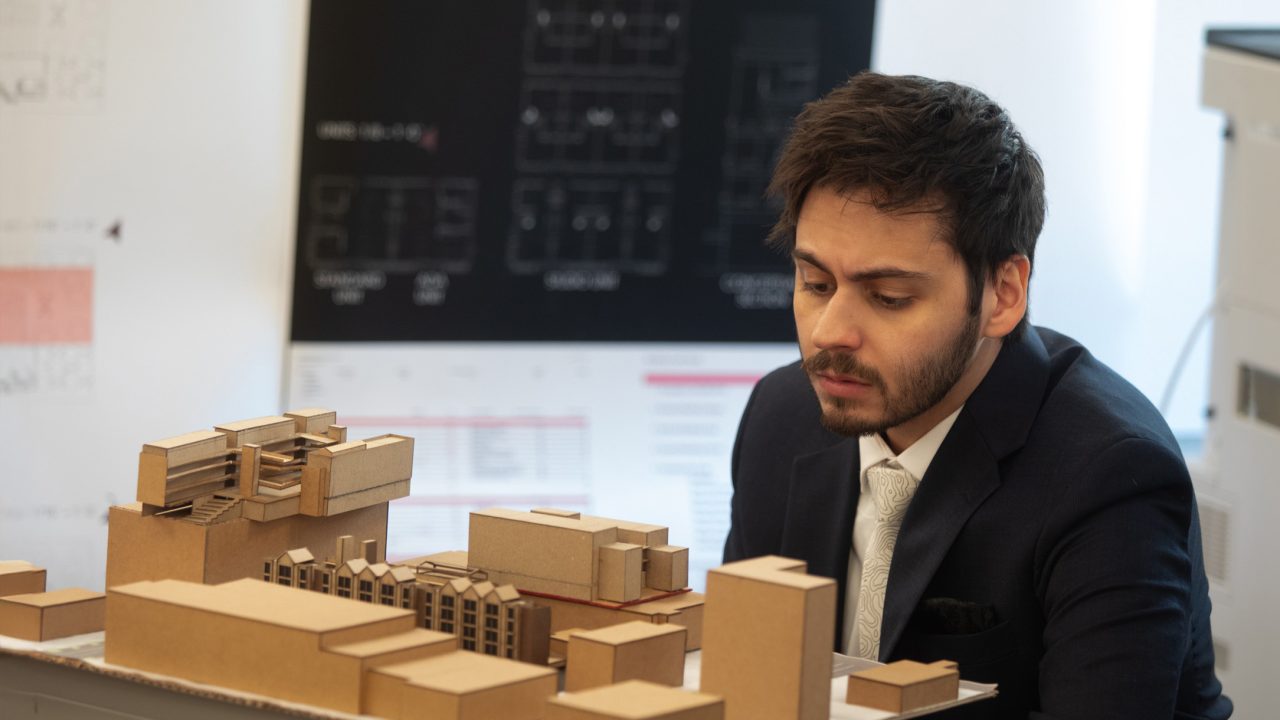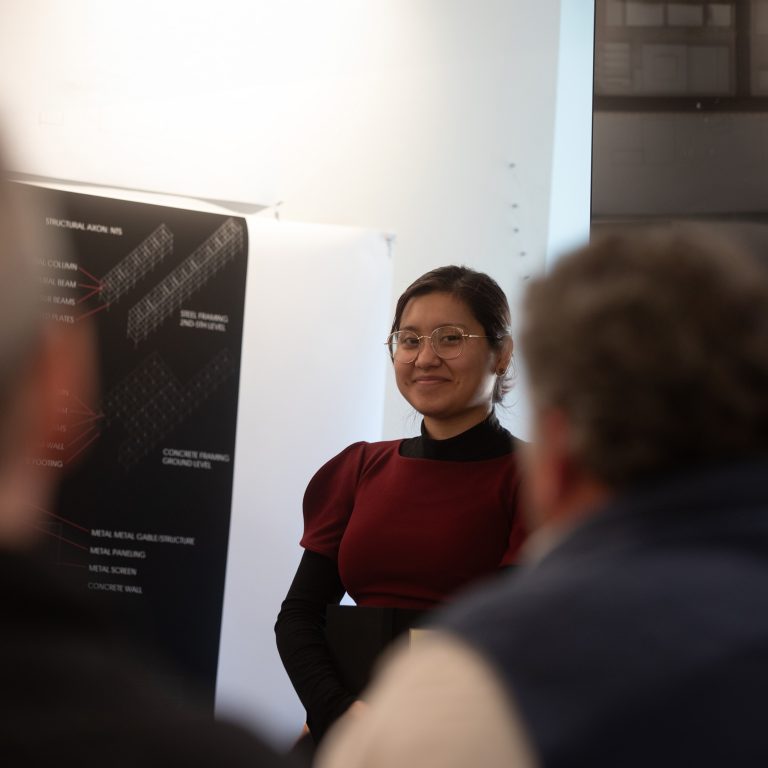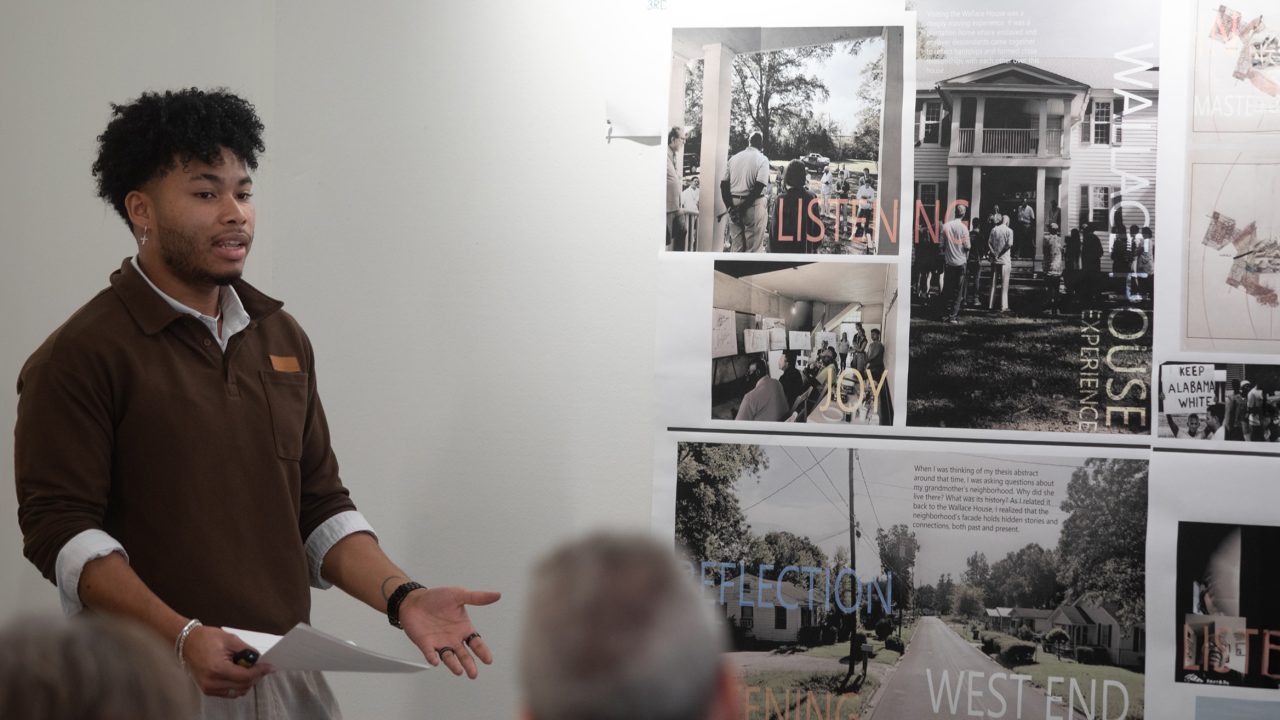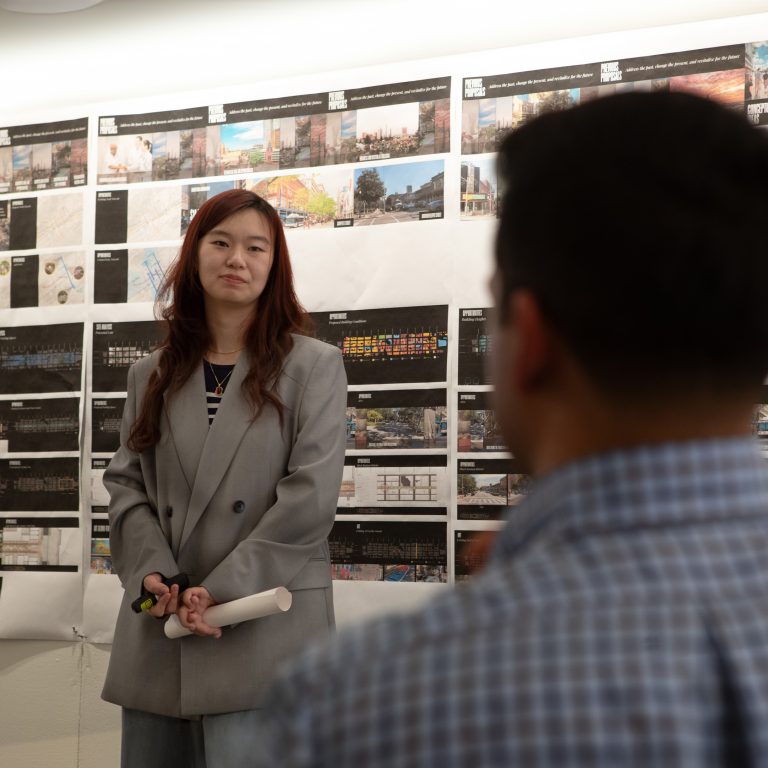Fifth Years Tackle Fourth Avenue North Revitalization

Last semester, Urban Studio fifth-year students dove into creating a master plan for the revitalization of one of downtown Birmingham’s busiest one-way streets, Fourth Avenue North.
Through their research, they discovered how such a significant project has the potential to reconnect neighborhoods like Smithfield to downtown and rejuvenate this critical corridor.
At the fall semester’s conclusion, each student proposed unique architectural interventions designed to concretely address the corridor’s varied challenges. During the first half of the spring semester, they continued exploring their individual projects and created design presentations to showcase what they’ve learned and how their projects fit into the city fabric.
“Architecture is a very public, collaborative activity,” explained juror Eric Wadsworth of Wadsworth Architecture Company. “Being able to participate in a public, collaborative process—presenting an idea and then receiving and responding to other points of view—that’s the way the world of architecture works, so it’s a good experience to have as a student.”
Thesis presentations, vital for fifth-year architecture students, encapsulate the essential skills and experiences required in professional architectural practice. Across juror responses, common themes emerged highlighting that the thesis presentation is an important opportunity for students to articulate and showcase their synthesis of research, critical thinking, design exploration and personal convictions about architecture’s role in society.
“Academia is one of the few places where ideas can be discussed free from real-world constraints,” added Alex Hamady ‘21, an Associate Architect with ArchitectureWorks. “All design starts at the hypothetical. It’s important to know what questions are being asked and what debates are being had.”
Each juror emphasized how these presentations prepare students for professional practice by simulating real-world experiences where clear, confident communication of design intent to diverse audiences is paramount.
Laura Chavez—Designing for Dignity
“The most surprising aspect of my thesis research was the importance of background information,” Chavez stated. “Before working in Urban Studio, we didn’t focus much on research analysis. However, once I began diving into the research, I realized how much it opens opportunities and considerations for potential design solutions. It really highlighted the impact that research can have on the overall direction and success of a project.”

Through her thesis research, Chavez determined there was a missing piece in the fabric of services for the houseless. Most shelters are divided by gender and age, which is an important aspect of shelter safety. However, it also separates families when parents and children or entire families try to stay together.
Her design is considered a “transition shelter” where a family can go for an extended stay while getting back on their feet. The mixed-use design includes a ground floor designed for retail and workforce development, including a grocery store and trades, to allow the residents the opportunity to interact with the city.
Tyler Layton—Uniting Fractured Communities with Architecture
“What surprised me the most is the significance of my thesis,” said Layton. “My topic focuses on listening and its effects on people, and I’ve realized how often we overlook something so simple and obvious—truly sitting back and allowing someone to speak.”

Layton’s thesis project created a multi-use Opportunity Center near the Smithfield terminus of their master plan’s trolley system. After meeting with community members and learning more about the rich history of Smithfield and what the residents felt was needed to help their community grow, he developed the idea of a place where community members can gather, learn and contribute back to the community.
His designs related to the historic visuals of Smithfield, specifically the rooflines, and allow for updating and changing the programming as the community’s needs evolve.
Han Li—Transitional Spaces and the Arts
“What surprised me the most in my thesis research is how much transitional spaces can influence people’s behavior and feelings” Li shared. “At first, I thought they were just physical changes between public and private spaces, but I realized that things like seating arrangements, materials, lighting and even sound can change how people interact and feel in a space. And these elements can give a space a sense of place.”

One of the things the trio learned during their master plan research was the continually growing public art spaces along Fourth Avenue North. Li expanded on this premise with a two-block area that could feature both arts education and a vibrant arts district. Her project is located near the Post Office, where Fourth Avenue meets 24th Street. Her campus includes artist studios, educational and gallery space, public artwork and ideas on how the Post Office building could be reinvented in the future.
Each year the jury is made up of a variety of local professionals—seasoned and early career architects, community members and instructors. Urban Studio alumni often join as well. The jurors bring a variety of perspectives to reviewing the students work. Both students and jurors learn something during the process.
“Urban Studio is different from other more traditional studio courses because the students are dealing with real sites, real policy, real stakeholders and real constraints,” said Ranjit Korah of Pfeffer Torode Architecture. “I learn a lot about challenges Birmingham is actually facing every time I attend an Urban Studio review.”
Wadsworth agreed, sharing, “The Urban Studio in particular is interesting because the students are trying to solve the same types of problems we are at my firm, using many of the same basic principles. It’s fun and refreshing to see another perspective.”
Urban Studio Director Alex Krumdieck ’86 would like to thank this year’s jury:
Kyle D’Agostino, Poole & Company
Rebecca Dobrinski, presentation coach
Alex Hamady ’21, ArchitectureWorks
Ranjit Korah, Pfeffer Torode Architecture
Eric Wadsworth, The Wadsworth Architecture Company
Ben Wieseman ‘12, Place Associates and CADC adjunct faculty
Want to learn more about the Urban Studio experience?
See more in:
Alumni,
Alumni Recognition,
Industry Engagement,
Student Experience,
Student Work,
Urban Studio
Related people:
Alex Krumdieck